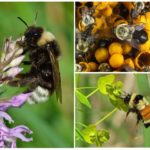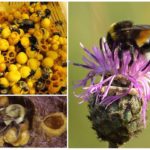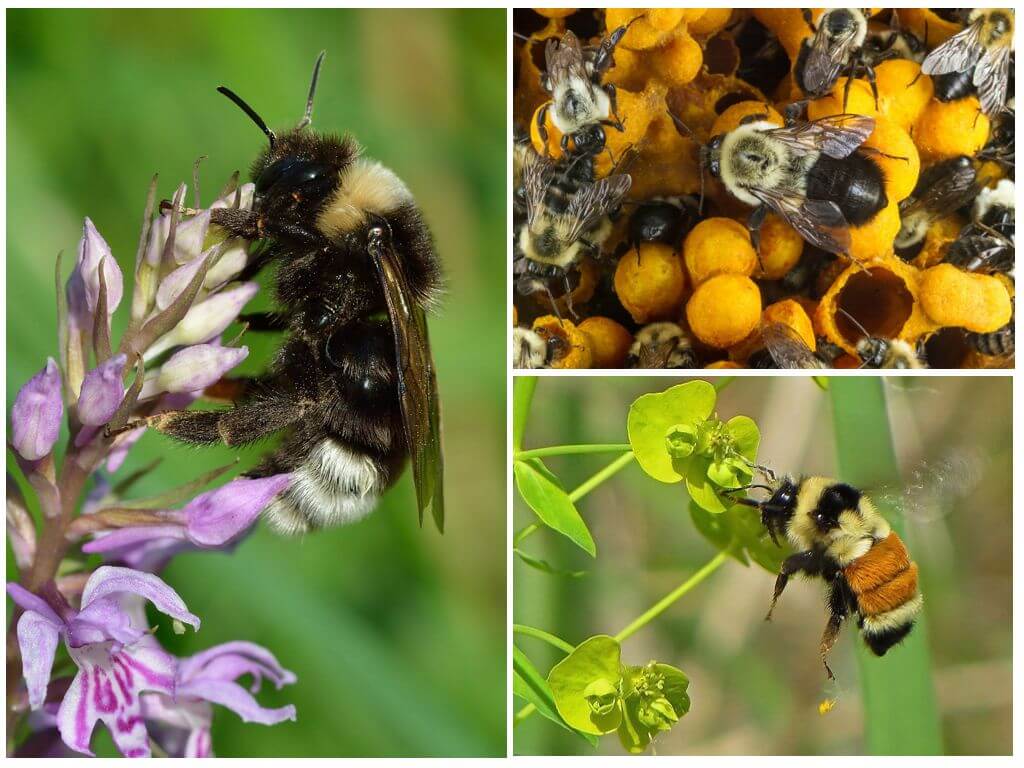Does honey have bumblebees
Content
- Bumblebees and honey
- Honey Bumblebees
Bumblebees belong to the family of bees and have a similar lifestyle with bees. They also live in large families and collect nectar from flowering plants. They are difficult confuse with other insectsthat's why every schoolboy knows what they look like. But not many can say with certainty whether bumblebees make honey.
On a note!
Hairy relatives of bees are able to process with the help of special enzymes nectar collected by them into a sweet and nutritious product called honey. They are fed by larvae and adults feed.The dessert created by bumblebees is no less useful and tasty than bees, and has great value for people.
Collecting nectar by insects
The shaggy family has a strict hierarchy. The main female lays eggs and is responsible for increasing offspring. She does not fly out of the nest. Working females make up most of the bumblebee family. With the help of long proboscis, they should collect nectar from plants and bring it to the hive. Working bumblebees process their prey into honey. The life and well-being of the whole bumblebee nest depends on the performance of these family members.
Females who do not have the opportunity to breed, bring other benefits. They are able to collect nectar from 30 flowers in one minute. For this reason, they are deservedly considered the most effective pollinators of plants. Bees at the same time have time to fly only 10-12 inflorescences. And the working day of the bees is much shorter than that of their opponents.
Interesting!
The good eyesight of shaggy insects allows them to pick up floral liquids in rainy weather and even at twilight time. Bees cannot boast of such abilities.
Male drones do not collect nectar.They build honeycombs in the form of deep cells that look like closed water lilies. In some cells are eggs and larvae, in other stocks of food, including beef and pollen. They feed the growing larvae, so in need of nutritious and healthy food. Bumble-bee honey meets all these requirements and is the main feeding for the offspring.
Features of the Bumblebee Product
The taste and texture of the bumble-bee delicacy are significantly different from the usual bee product. Bumblebee produces its honey from liquid nectar, in which more water is present as a percentage. This is explained by the fact that bumblebees prefer to pollinate such plants, in which the flower juice is more liquid:
- meadow clover;
- picnic;
- medicinal root root;
- Lunnotka purple and others.
The floral fluid of these plants contains a large amount of water - up to 80%. Bees do not collect such nectar, preferring the flowers of acacia and lime, in which it is more dense. The density of a substance also depends on density.
On a note!
The share of bumblebee products is low, and its caloric content does not exceed 300 kcal per 100 grams. Such a dessert will delight even those who watch their figure.Bumble-bee syrup contains particles of pollen, which is also not characteristic of the product of beekeepers.
How much honey can bumblebees collect
Despite the high productivity of shaggy insects, their reserves are significantly inferior to the number of honey stocks of bees. Bee families live in huge colonies of several thousand individuals, in order to feed their offspring, they need a lot of sweet product. In addition, bee colonies live several seasons and every winter they need to hibernate, having enough food supplies. There is no need for their close relatives.
Bumblebee nest has an average of 400 - 500 individuals, most of which are working females. Family life is only a few months. They live for one season from April to September. But is there any honey in bumblebees in reserve? In order for it to be, interested beekeepers specially create beehives for Bumble-bee families and contribute to their favorable development. From one such hive you can collect only 200 ml of valuable product.
Due to such a small amount of useful delicacy, the breeding of these insects for honey did not become popular.But they are bred for another equally important mission - to pollinate greenhouse crops on an industrial scale.









